Jaw Shaping in United Kingdom
Search and Compare the Best Clinics and Doctors at the Lowest Prices for Jaw Shaping in United Kingdom

Find the best clinics for Jaw Shaping in United Kingdom
No clinics available
Malaysia offers the best prices Worldwide
Price: $ 672

- Home
- United Kingdom
Compare Before & After Photos of _procedure_photos.phpJaw Shaping
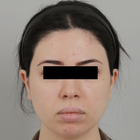
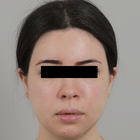
Front view

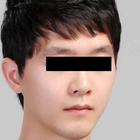
Front view
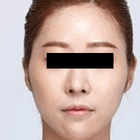
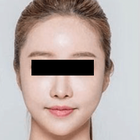
Front view
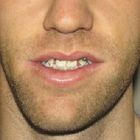

Front view
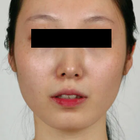
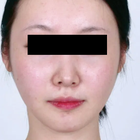
Front view
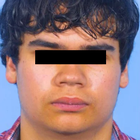
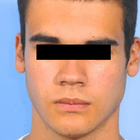
Front view

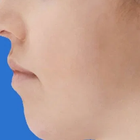
Full-side view
WHY US?
At Medijump, we're making medical easy. You can search, compare, discuss, and book your medical all in one place. We open the door to the best medical providers worldwide, saving you time and energy along the way, and it's all for FREE, no hidden fees, and no price markups guaranteed. So what are you waiting for?

Free

Best Price

Widest Selection

Risk-Free
What you need to know about Jaw Shaping in United Kingdom
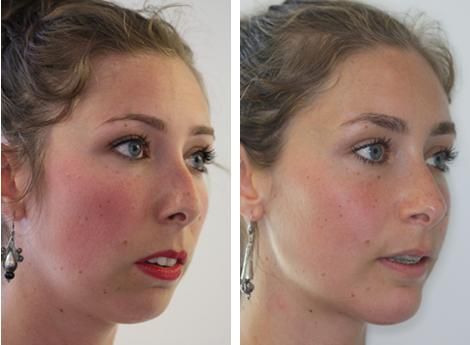
Also known as Mandibular Angle Reduction, V Line Surgery or Jawline Surgery, Jaw Shaping Surgery is performed with the purpose of narrowing the lower part of the face, with particular emphasis on the mandible (lower jaw) and the muscular attachments.
A wide jaw angle can be caused by enlarged muscle, bone, or a combination of the two. A prominent jaw angle or square jaw is considered a masculine trait, particularly in Asian countries. Therefore, many people opt for surgical correction to get their desired look. The surgery can shorten an overly long jaw and change a square-shaped face to an oval shape. Some people with temporomandibular joint (TMJ) disorders, uneven jaws, or jaws that causes pain when chewing might also undergo this surgery to correct pain.
There are several critical elements involved in the surgery, including the angles of the jaw, the body of the mandible, and the shape of the chin. While the procedure is typically performed on women with a square jawline who want a more feminine look, it can be done on both men and women. However, this procedure may not work for people who want to feminize a male’s face since males usually have a taller and longer face. Therefore, a V Line Surgery would only make a face look more elongated.
What does a Jaw Shaping Procedure Involve?
Various developmental, congenital, or some rare disorders such as acromegaly can cause enlarged mandibles, which can be corrected by Jawline Surgery. It is ideal for those with overly square or U-shaped jawline, overly manly jaw shape, bloated cheeks, and double chin. If you are considering V line surgery, you will need to be in a good state of physical and mental health.
Prior to the surgery, you will be examined by X-rays and 3D CT scans. Your surgeon will analyze and evaluate the overall structure of your jaw to create a plan to produce the desired result. You will also need to undergo medical tests such as ECGs to ensure that you don’t have a condition that may put you in danger or compromise the success of the surgery.
Surgery is performed under general anesthetic through tracheal intubation and leaves minimal scarring. You will need to fast for 8 hours before the surgery. Oscillating saws are used to reshape the jaw. The surgery can be performed inside the mouth (intraoral) or from outside the mouth (postauricular). The intraoral approach is the most widely used method. With this approach, an incision is made between the gum and the back of the cheek next to the jaw. Then, the jawline is carved out into their desired shape. A portion of the masseter muscle is shaved off, and the outer portion of the bone is chipped off. This approach is best for patients who aim to narrow their frontal view since the change is subtle and natural.
If the patient wants to change the appearance of the jaw angle from a side view, the overall contour of the bone will need to be changed. This means that the patient needs a full-thickness bone removal. Although it can be done through the intraoral approach, the surgeon’s view during this approach is very limited, which can decrease the precision of the procedure. Therefore, the best approach is from outside of the mouth or postauricular. To get direct access to the bone, the surgeon makes an incision hidden around the ear. This approach can remove a more substantial amount of bone. The recovery time using this approach is also much shorter than the intraoral approach since the swelling stays confined to the neck area.
How Long Should I Stay in United Kingdom for a Jaw Shaping Procedure?
The typical length of time for Jaw Shaping is usually around 2 hours. Nevertheless, you have to stay in the hospital for around one to two days for initial recovery where you will be monitored to make sure everything is fine. After being discharged, plan to stay in the United Kingdom for 10 to 14 days or until the surgeon says you can go home. The stitches are generally removed within two weeks after surgery, though this may vary from patient to patient.
What's the Recovery Time for Jaw Shaping Procedures in United Kingdom?
Immediately after the surgery, you will need to wear a facial mask that presses tightly against the skin around the jaw to keep the post-surgery swelling down. Also, you will not be allowed to eat foods that require chewing because it will delay the recovery and can cause bleeding. If you undergo the intraoral approach, your food intake will be limited for a considerable length of time. You may feel some swelling, numbness, and discomfort around the incision for several days, but the surgeon will prescribe medications to help with the pain.
The recovery period can be different for each individual; some people may be able to go back to their regular routines after seven to ten days, but others may need more time to fully recover. Avoid doing any vigorous activity that increases your blood pressure for several weeks, such as jogging and other exercises. Most of the visible signs, such as swelling and bruising, should disappear within a few weeks. Symptoms such as hematoma and infection are common, and will usually subside within three to six months post-surgery.
What sort of Aftercare is Required for Jaw Shaping Procedures in United Kingdom?
You must follow your surgeon aftercare instructions strictly to accelerate your recovery and minimalize possible complications. The instruction will likely include the following recommendations:
- Food intake. You may need to consume a liquid diet for a week after surgery as drinking your food is less painful and prevents trauma to the jaw area. You should be able to consume hard foods within one month.
- Oral hygiene. An antibacterial mouth rinse will keep your mouth and incision area clean, which will decrease the possibility of infection.
- Avoid tobacco and alcohol. Smoking and drinking alcohol should be avoided for a while.
- Keep the head elevated. You should keep your head elevated even when you are sleeping as it is the key to reduce swelling.
- Compression bandage. You are recommended to wear a compression bandage at all times for the first three days and while sleeping for the first week or two.
- Avoid strenuous activity. Do not do any heavy lifting or exercise for at least a month. However, do walk around and practice some gentle movement.
- Attend follow up appointments. The surgeon will check your progress to avoid any complications.
What's the Success Rate of Jaw Shaping Procedures in United Kingdom?
Jaw shaping surgery is a safe procedure when performed by a trained surgeon. Around 94% of patients express their satisfaction with this procedure. However, it is important to have realistic expectations. You should also be aware of the possible risks that this surgery may cause. These risks include infection, asymmetry, seroma, deep vein thrombosis, pulmonary embolism, and hematoma. Partial numbness of the jaw can also happen due to nerve damage.
Are there Alternatives to Jaw Shaping Procedures in United Kingdom?
If you wish to reshape your jaw but do not want to undergo surgery, there are non-invasive options available. The most popular alternatives are Botox and Dysport, which can effectively contour the jaw by relaxing the appearance of a square jaw. This procedure shrinks the masseter muscle by weakening it. These injectable can also be used to correct facial asymmetry around the jawline area. Since they are non-invasive, you can return to your daily activates right away and they offer a subtler shift in your appearance. However, these techniques are limited to cases in which the masseter is enlarged and may not work as well as V Line Surgery.
Whilst the information presented here has been accurately sourced and verified by a medical professional for its accuracy, it is still advised to consult with your doctor before pursuing a medical treatment at one of the listed medical providers
No Time?
Tell us what you're looking for and we'll reachout to the top clinics all at once
Enquire Now

Popular Procedures in United Kingdom
Prices Start From $70

Prices Start From $28

Prices Start From $1,945

Prices Start From $275

Recommended Medical Centers in United Kingdom for procedures similar to Jaw Shaping

- Interpreter services
- Translation service
- Religious facilities
- Medical records transfer
- Medical travel insurance
- Health insurance coordination
- TV in the room
- Safe in the room
- Phone in the room
- Private rooms for patients available

- Interpreter services
- Translation service
- Religious facilities
- Medical records transfer
- Medical travel insurance
- Health insurance coordination
- TV in the room
- Safe in the room
- Phone in the room
- Private rooms for patients available

- Interpreter services
- Translation service
- Religious facilities
- Medical records transfer
- Medical travel insurance
- Health insurance coordination
- TV in the room
- Safe in the room
- Phone in the room
- Private rooms for patients available

- Interpreter services
- Translation service
- Religious facilities
- Medical records transfer
- Medical travel insurance
- Health insurance coordination
- TV in the room
- Safe in the room
- Phone in the room
- Private rooms for patients available

- Interpreter services
- Translation service
- Religious facilities
- Medical records transfer
- Medical travel insurance
- Health insurance coordination
- TV in the room
- Safe in the room
- Phone in the room
- Private rooms for patients available

- Interpreter services
- Translation service
- Religious facilities
- Medical records transfer
- Medical travel insurance
- Health insurance coordination
- TV in the room
- Safe in the room
- Phone in the room
- Private rooms for patients available

- Interpreter services
- Translation service
- Religious facilities
- Medical records transfer
- Medical travel insurance
- Health insurance coordination
- TV in the room
- Safe in the room
- Phone in the room
- Private rooms for patients available

- Interpreter services
- Translation service
- Religious facilities
- Medical records transfer
- Medical travel insurance
- Health insurance coordination
- TV in the room
- Safe in the room
- Phone in the room
- Private rooms for patients available

- Interpreter services
- Translation service
- Religious facilities
- Medical records transfer
- Medical travel insurance
- Health insurance coordination
- TV in the room
- Safe in the room
- Phone in the room
- Private rooms for patients available

- Interpreter services
- Translation service
- Religious facilities
- Medical records transfer
- Medical travel insurance
- Health insurance coordination
- TV in the room
- Safe in the room
- Phone in the room
- Private rooms for patients available
Jaw Shaping in and around United Kingdom
About the United Kingdom
The United Kingdom is a constitutional monarchy comprising much of the British Isles. This Union is more than 300 years old and comprises four constituent countries: England, Scotland, Wales, and Northern Ireland. It occupies all of the island of Great Britain, the north-eastern portion of the island of Ireland, and most of the remaining British Isles. The UK is an island nation but shares an open land border with Ireland. The UK has a population of 65 million people, the capital and largest city is London.
The United Kingdom welcomes an ever-increasing number of medical tourists each year, many of which travel for Jaw Shaping procedures. The government provides all British citizens free or low-cost care under the NHS, also known as the National Health System, leaving a small private sector for routine operations, which caters to people that do not want to wait in line for elective procedures or are not citizens or residents of the Islands.
Popular Parts of United Kingdom
Made up of Great Britain and Northern Ireland, the United Kingdom is filled with vibrant cities and tranquil countryside.
- England is home to London, United Kingdom’s largest city and capital which also serves as its financial center. Today, the country continues to be one of the most popular tourist destinations in the world. Although most tourists stay in London, the country actually has a plethora of attractions spread all over its cities. Tourists can check out Buckingham Palace, visit the Tower of London, explore Stonehenge, relax on the beach in Brighton, hike Hadrian’s Wall, or go museum hopping.
- Scotland is popular for its welcoming locals, beautiful parks, ancient architecture, spectacular lochs and mountains, and delightful whiskey. Its vast wilderness area is a great place to have some fantastic outdoor adventures. The country is rich in history and culture, which is evident in its hundreds of castles and historical sites. It also has glorious cities, such as Edinburgh, a city filled with parks, museums, cobblestone streets, and pubs.
- Wales might be tiny, but this green country offers countless opportunities for its inhabitants and visitors to escape into nature. The country is mainly mountainous, making it a hiker’s paradise. Its higher peaks lie in the north and central areas, including the famous Snowdon. Not only widely-known for its lush greenery, but the country is also a wonderful beach destination. In the summer, families will fill up the beaches to soak up the sun and kids will be running around in the sand. Wales’s beautiful landscape is complemented by stunning castles which should not be missed by any visitors.
- Northern Ireland is often overlooked by tourists, but once they arrive, they will be surprised by its serene scenery, friendly people, and scrumptious food scene. Giant’s Causeway, the country’s only UNESCO World Heritage site, has been attracting visitors from all around the world. It is a remarkable hexagonal-stone formation with an interesting magical tales behind it. Another popular attraction is the Titanic Belfast, a museum that provides nine galleries where visitors can discover the Titanic story. Visitors will be able to learn about the ship’s construction and get new insights into its disastrous demise.
Weather and Climate in the United Kingdom
The United Kingdom enjoys a temperate climate and has plenty of rain all year round. Tourists can visit any time of year as it does not experience extreme weather. There is a great variety of changeable weather, but the overall weather and seasons are generally the same throughout this sovereign country.
- The Spring months are from late March to early June and this season is known to be one of the best times to visit the United Kingdom because the weather is warming up and beautiful spring flowers are blooming and the temperatures range from 9 °C to 12 °C.
- Summer is from June to August and is the hottest season of the year but the temperatures rarely rise above 35 °C. Although rainfall will decrease during this season, prepare to find some rainy days. During this season, some cities like London experiences approximately 15 hours of sunshine.
- September to November is Autumn, and it has a variety of weather. The early months of September and October are still quite warm, but the temperatures will decrease in November. Typically, November is also the wettest month of the year.
- With an average temperature of 4 °C, Winter is the coldest season in the United Kingdom. The season can be wet and windy with frost and occasional snow. Winter also experiences minimal daylight. Despite the gloomy weather, it is an enjoyable time to visit the large cities because the tourist attractions are usually quieter and the cities can be very festive.
Getting Around in the United Kingdom
There are plenty of airports in the United Kingdom, but the busiest and the largest airport is the London Heathrow Airport. It is the second busiest airport in the world after Dubai Airport. The airport has international connections with almost every country around the globe, including countries in the Middle East, Asia, Africa, and North America. It also serves domestic flights which provide an easy way to travel around the United Kingdom. There are budget airlines that offer a more affordable option for those who want to get around by plane.
The United Kingdom is very well connected by plane, train, and bus. The train is the most popular mode of transport and one of the most comfortable. Tickets can be booked online and it can be expensive, but most trains are equipped with air conditioning and sometimes Wi-Fi. There are two classes of train, the Standard Class and the First Class. Big cities and towns are usually connected by a regular bus service. The cost can be cheap, but the further you travel away from a city, the more expensive the cost. It is best to invest in an Oyster Card if you wish to travel by bus.
Taxis are available in most cities. There are two types of taxis; the metered taxis (painted in black) and private hire taxis (known as minicabs). The taxis should have a taxi-license displayed on the dashboard. The metered taxis can be hailed directly from the streets, while the minicabs have to be ordered via telephone. The minicabs are usually more affordable than the metered taxis because they operate on fixed prices and sometimes are even open to negotiation.
Tourist Visas in the United Kingdom
Citizens of the European Union can enter the United Kingdom without a visa. Additionally, British Nationals who are not European Union citizens and nationals of 56 countries can enter and stay for up to 180 days (90 days if they enter from the Republic of Ireland). Citizens of Kuwait, Oman, Qatar, and the UAE can obtain an online electronic visa waiver (EVW). Other nationals not listed in the visa-exempt for stays in the UK (including China and Russia) need to apply and obtain a visa before entering the country.
Additional Information
- Local Currency: Pound sterling is the official currency (£). US$ 1 will get you £0.8.
- Money & Payments: International ATMs that allow foreigners to withdraw cash directly from their home account can be found easily across the United Kingdom. Credit cards are accepted in restaurants, shops, and hotels (mostly Visa and MasterCard). Tipping varies between countries, but generally optional.
- Local Language: English is the official language and spoken by approximately 98% of the population. A number of regional languages are also spoken (Welsh, Irish, Scottish Gaelic, and Cornish). There are also people who will speak some foreign languages, mainly French, German, and Spanish.
- Local Culture and Religion: Christianity is the most popular religion. However, more than 25% of the population follows no religion. Other religions such as Islam, Hinduism, Sikhism, Judaism, and Buddhism are in the minority.
- Public Holidays: There is a variation of public holidays in the United Kingdom. Typically, the countries celebrate New Year’s Day and Christmas Day.
Popular Searches
- Plastic Surgery in Thailand
- Dental Implants in Thailand
- Hair Transplant in Thailand
- Breast Augmentation Thailand
- Gastric Sleeve in Thailand
- Gender Reassignment Surgery in Thailand
- Laser Hair Removal in Bangkok
- Botox in Bangkok
- Dermatology in Bangkok
- Breast Augmentation in Bangkok
- Coolsculpting in Bangkok
- Veneers in Turkey
- Hair Transplant in Turkey
- Rhinoplasty in Turkey
- Stem Cell Therapy in Mexico
- Rhinoplasty in Mexico
- Liposuction in Mexico
- Coolsculpting in Tijuana
- Rhinoplasty in Korea
- Scar Removal in Korea
- Gastric Sleeve in Turkey
- Bone Marrow Transplant in India
- Invisalign in Malaysia
- Plastic Surgery in the Dominican Republic
- Tummy Tuck in the Dominican Republic
- Plastic and Cosmetic Surgery in Poland
- Rhinoplasty in Poland
- Hair Implant in Poland
- Dental Implants in Poland
- IVF in Turkey